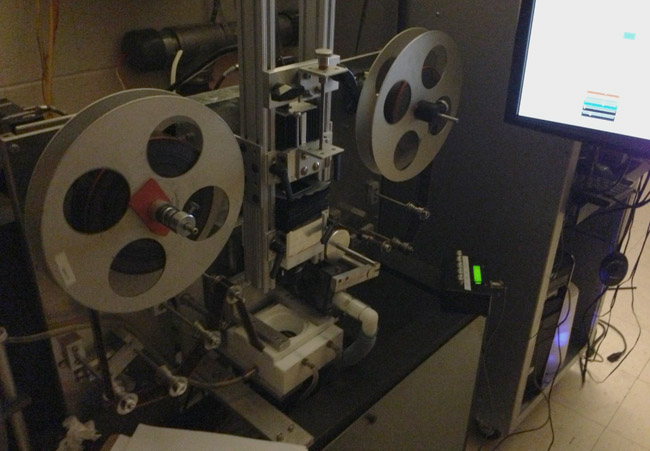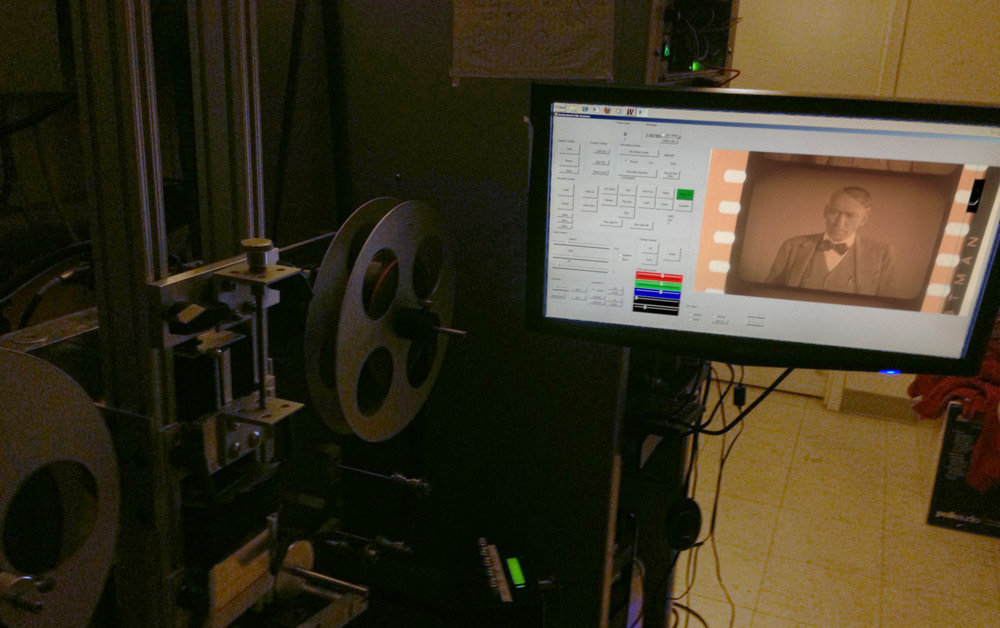Video & Film Solutions
Quality • Performance • Innovation
Video & Film Solutions © 2014 • 5800 Arundel Avenue • Rockville, MD 20852 • 301 770-9155
Background: Film as an image storage media is great, but it cannot last forever. As films are worn from use, or just simply decompose, they get scratched and fall apart. Shrinkage with film is not linear. It varies throughout the roll and many films will have mixed stocks and tints which affect the decomposing characteristics.
3K Liquid Gate Archival Film Scanner

Problem: To scan these decomposing, compromised, or damaged films, a scanner needed to be built. We have two Spirit 2K scanners. They are great machines and their precision and machining is second to none. This poses a problem with this type of film. The problem is the film to be scanned has so many different problems and issues that the material is no longer precision. It conforms to no specs and its characteristics change throughout the roll. You can not optimize a sprocket wheel because shrinkage levels varies. On top of that many films are missing their perforations all together. A line scan scanner won't work with this type of film because the film many times has no positional reference other than the picture itself.
Besides the mechanical issues The film also needs to be scanned edge to edge. To have a true copy of the historical document everything should be seen. This includes manufacturer markings, perforations, printer masks, and sound. This can provide valuable information about the item.
Solution: A 3k slow speed liquid gate sprocket-less scanner, RGB LED light source and 3K aerial image. A linescan could not be used because you must either have constant velocity or accurate position the films provide neither to be possible. The 3K is because the film is scanned edge to edge over scanned top to bottom. The picture area is about 2K. The velocity and position reference for the scanner have to different inputs. One is digital image perf registration. When perfs are unavailable the machine switches to operator input to guide the servo. This is done through the use of a gaming control. Digital registration is still performed and the operator just corrects for servo errors. This allows for any gauge and any condition. No perfs are required. Because it is a capstan drive it is gentle on the film with no damaging pins or sprockets. 10Bit DPX files are generated from the software.
All hardware and software developed in house.


